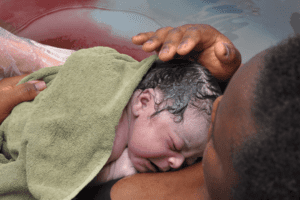Caring for Your Caesarean Incision After Birth


With up to one-third of pregnant women delivering by Cesarean section in the United States, it’s important to know what to expect when it comes to your recovery after Cesarean delivery. Being sent home with an incision on your belly can add to the anxiety that caring for a newborn can already cause, so here are some tips to take the worry out of caring for your C-section incision:
Keep an eye on it — either yours or someone else’s! In the haze of having a newborn, it might sound hard to have one more thing on your daily to-do list that doesn’t include feeding, sleeping, or changing diapers! However, it’s really important to check on your incision daily. Though you might feel squeamish, the only way to know if it’s healing correctly or if there might be a problem is to take a look. Once a day, sneak a peek at it to make sure it doesn’t have any of the warning signs we mention in #7. If you can’t see it easily, use a mirror while lying in bed or have a partner or friend do it. Don’t be shy about asking for help!
Stay out of the tub. Showers are perfectly fine, but submerging your scar in water isn’t so good for healing. Don’t start tub baths where your belly is underwater until your doctor gives you the green light, which is usually around 4 to 6 weeks postpartum.
Keep it clean. This might sound obvious, but keeping a surgical incision clean is a top priority. You can do this by showering and letting the soap and water run over it as you wash other parts of your body.
…but don’t go overboard. Resist the urge to scrub or put harsh cleansers like sanitizers on your healing incision. Pat it dry once you come out of the shower or use a hair dryer set on cool, but there\’s no need to go crazy. Clean is good, but using too much force while scrubbing can cause the skin edges to separate.
Let it see the light of day. It’s OK to occasionally wear an abdominal binder to give your muscles support, or to place a wash cloth over the incision if you are sweating and want to wick away moisture, but doing these things around the clock can lead to a moist, dark breeding ground for bacteria. Once your bandage comes off in the hospital it’s important to let your incision air out during the day so it is less prone to infection.
Avoid putting any creams or lotions on it unless told otherwise. It might be really tempting to start slathering your incision with scar cream or other moisturizers to help it heal better, but resist! Scar creams don’t work, and putting anything on the incision while it’s just starting to heal can prevent it from coming together as it should.
Take Steri Strips off when you are told to. Some doctors will place little white bandages called steri strips along the length of your incision, and they should have told you when to remove them before you were sent home from the hospital. Most doctors advise that they be removed about 1 week after surgery, but if yours haven’t fallen off by that point, be sure to take them off when you were told (this is done very easily by moistening them with water and then peeling them off…it doesn’t hurt!). Leaving these on too long can also trap bacteria and lead to a skin infection.
Know the signs that could signal an infection. These symptoms are super important to report to your doctor or midwife: a fever above 100.4, any redness or hard areas around your incision, pus or blood coming out of the incision (the occasional ink spot of drainage is OK but anything more deserves a check-in), excessive pain when you touch your incision, a foul odor, or seeing areas where your incision is separating. These are not all necessarily catastrophic, but your doctor needs to know so you can be examined, and complications can be avoided or an infection can be treated sooner rather than later.
Powered by Bundoo®










































